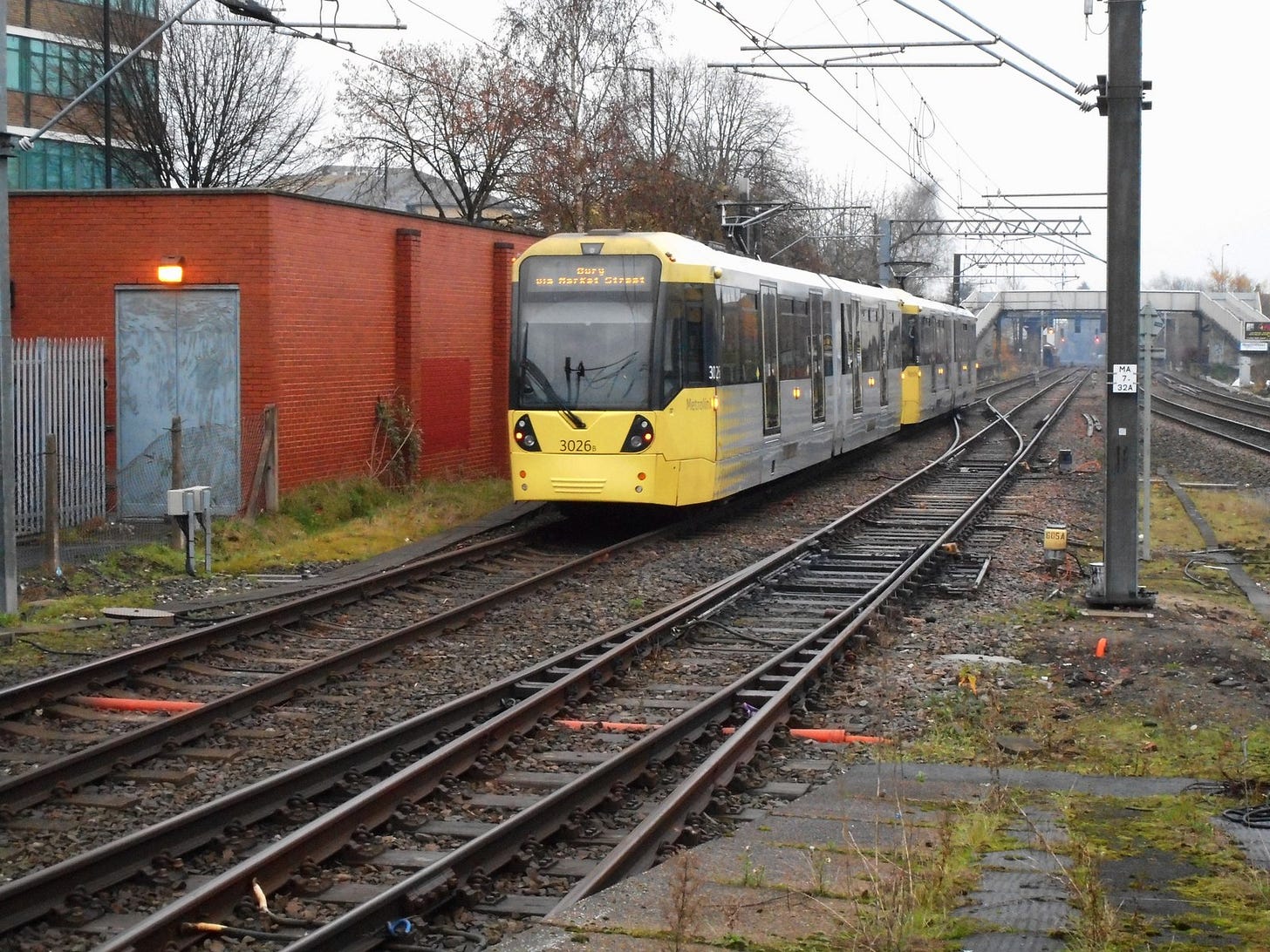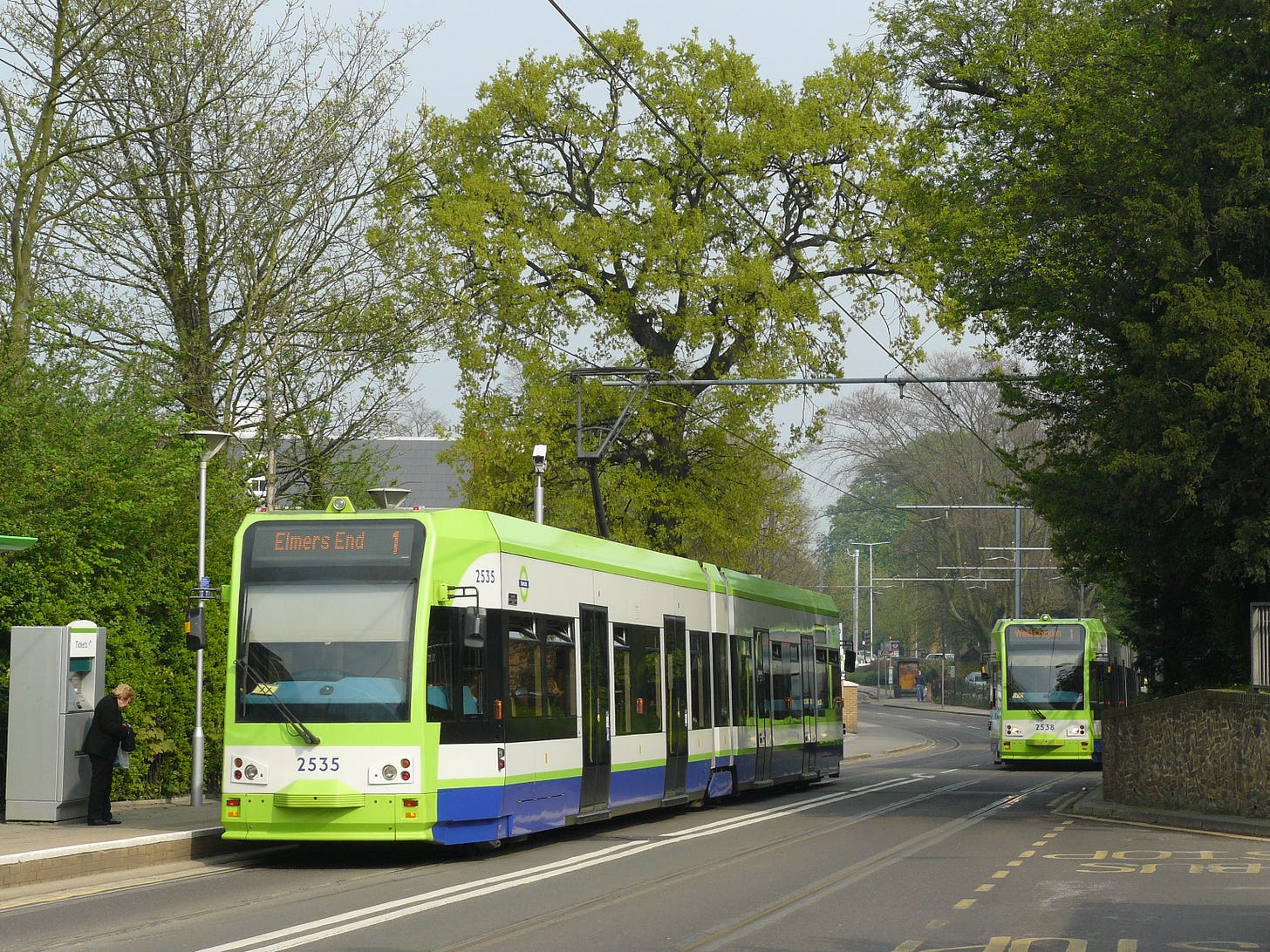Leeds doesn’t need a tram. It needs a tram-metro.
Street-running trams in the suburbs, tunnels under the centre.
As people who are reading this probably know, Leeds is the largest city in western Europe without any kind of tram, light rail, metro or even a network of electric suburban trains. The fact that it was promised a tram in 1993, the fact that it still does not have a tram, and the fact that the government has no plans for a tram only serves to rub salt into the wound.
Among people who care about growth and progress in Britain, the Leeds Tram has therefore become deeply symbolic. It represents something about the country’s inability to build the kind of infrastructure that would be standard in any other European country.
But I don’t think Leeds should have a tram. I think it is actually too big to have a tram. Instead, it should have a tram-metro. This is a system, commonly used in cities in Germany and the Benelux countries, that runs on city streets in the suburbs, but goes into a tunnel under the centre.

A tram-metro enables Leeds to get the best of both worlds. It is much cheaper than building a ‘full-fat’ metro, because the vast majority of the network is street-running. At the same time, it is separated from other traffic for a handful of kilometres in the city centre, which is the place where the journeys are slowest.
It would, admittedly, be more expensive than a tram. British tram projects cost £140 mn/km, which is already well above the global average. The Northern Line Extension cost about £430 mn/km, which is also well above the global average. (It must be said, however, that Manchester’s Second City Crossing cost £403.2 mn/km, and it is the sections crossing the city centre which a tram-metro puts in a tunnel. The difference in costs would therefore be less than it first appears.)
But with trams, you get what you pay for: trams are slow. Manchester’s Metrolink takes 28 minutes to crawl the 10 km from Ashton-under-Lyne to Piccadilly, an average speed of 21 km/h. In the centre, Metrolink is even slower: it goes at an average of 12 km/h while crossing the centre between Piccadilly and Deansgate.
They are also less reliable than metros. Because trams are not a closed system, and have interactions with the rest of the road network, delays on the roads can cascade over to the tram network. If they are not well-designed, tram networks can end up being like a more expensive, less flexible form of a bus.
Britain tries to get around both of these problems by segregating trams as much as it can. Sometimes we achieve total segregation, by taking over old railway lines and converting them to tram-running. This is, for instance, how the Altrincham Line of Manchester Metrolink works, which is really a railway line pretending to be a tram line.

If there isn’t a railway line to re-use, the segregation is partial. Between East Croydon and Sandilands, Croydon’s Tramlink goes down Addiscombe Road where it is a minor road without much through-traffic. Even though it does have some interactions with vehicles, these are kept to a minimum.

But it is impossible wholly to segregate trams from other traffic. The nature of trams is that they are street-running. At some point, they will have to compete for space with pedestrians, bikes, cars and delivery vans.
This is particularly problematic in the city centre. Trams need to go into the centre, because that is where people want to go. But the centre is the place where it is hardest to segregate them from other forms of traffic: there are rarely big roads where trams can have their own lanes, and nor is it possible to close streets off to all forms of traffic, including pedestrians. In the city centre, it is unavoidable that trams interact with things that aren’t trams.
As a result, the centre is the place where the trams are slowest: the average speed of Metrolink in Manchester’s city centre is 10–12 km/h.
Conversely, street-running is less of a problem in the suburbs. It is easier to find places where the trams can be wholly or partially segregated from other traffic – wide arterial roads where trams can be given their own lane, quiet streets like Addiscombe Road, or brownfield sites where they can be given their own alignment.
All of this points in favour of a hybrid system, where the trams are fully segregated in the centre, but only partially segregated from other traffic in the suburbs. That system is the tram-metro.
Tram-metros are common in German cities. They are used in big cities like Cologne and Frankfurt (which are probably big enough to have a full metro) as well as smaller, Leeds-sized ones like Dortmund and Hannover.
Hannover, in fact, is almost exactly the same size as Leeds: there are 680,000 people within 10 km of the centre of Hannover, compared with 676,000 in Leeds. Its tram-metro network, known as the Stadtbahn,1 looks like this.

There are a total of 19 underground stations across three lines (marked with a ‘U’ on the map), but in total there are 201 stations that are served by the tram-metro.
The upshot is that the Hannover tram-metro is faster than pure tram systems like the Manchester Metrolink or Munich’s trams, as the graph shows. (It excludes the Metrolink lines that are really railway lines pretending to be tram lines, because they have very little street-running.)
It is worth dwelling for a moment on this graph. Comparing transit systems entirely based on speed are slightly misleading, because the easiest way to make a transit line faster is for it to stop less often.
The graph therefore plots average speed against average distance between stations. It shows how well transit systems manage the trade-off between speed and frequent stops. Systems above the trend line manage this trade-off better: in other words, they perform better, through a combination of better technology and better operations.
Hannover’s tram-metro performs better than a tram system, but less well than a full metro system like the Munich U-Bahn. That is not necessarily a problem: Hannover is small enough that the lower speeds are not a problem, and its size also means the costs of a full metro would probably not be worthwhile.2 For Hannover, the speed/cost trade-off points in favour of a tram-metro.
I think a tram-metro is the right solution for Leeds. It is quite hard to interpret the current plans for a Leeds Tram, but it looks like they are proposing about 2 km of central street running on each trunk. This means it would take about 12 minutes to cross the city centre, at Manchester tram speeds. At the speed the Hannover tram-metro travels underground, it would take about 5 minutes to do so.
I think that Leeds should be more ambitious than asking just for a tram. The risk is that it asks for a tram, gets one, and then realises in a decade’s time that the tram is too slow, as the Manchester Metrolink is. We should not be content with a transit system that is done on the cheap. Leeds should not have a tram. It should have a tram-metro.
„Stadtbahn“ is one of the most unhelpful words in the German language. It generally refers to tram-metros. However, Karlsruhe’s tram-train is also called the Stadtbahn, and so is the trunk line of Berlin’s S-Bahn.
As a counterpoint, Nuremberg does have a full metro system.


Sounds a lot like the Tyne and Wear Metro.
The other problem in Leeds is the suburban train network is pretty thin on the ground (in terms of frequency and stations). Similar for Bristol although improving at a slow pace there.
Why not just have a very short, very frequent metro type service in the centre instead, linked to solid bus interchanges (weather protected), and then build out from there.
A vehicle every 3 minutes level of frequent, fully automated (may need tight turning loops at each end, or multiple reversing sidings/boarding platforms at each end).
Yes lack of single seat transport is less convenient, but can use the flexibility of bus services to work out the best route for tram extension before committing.
Alternatively, have BRT tunnels in the centre with frequent through service, convert to metro/tram later.